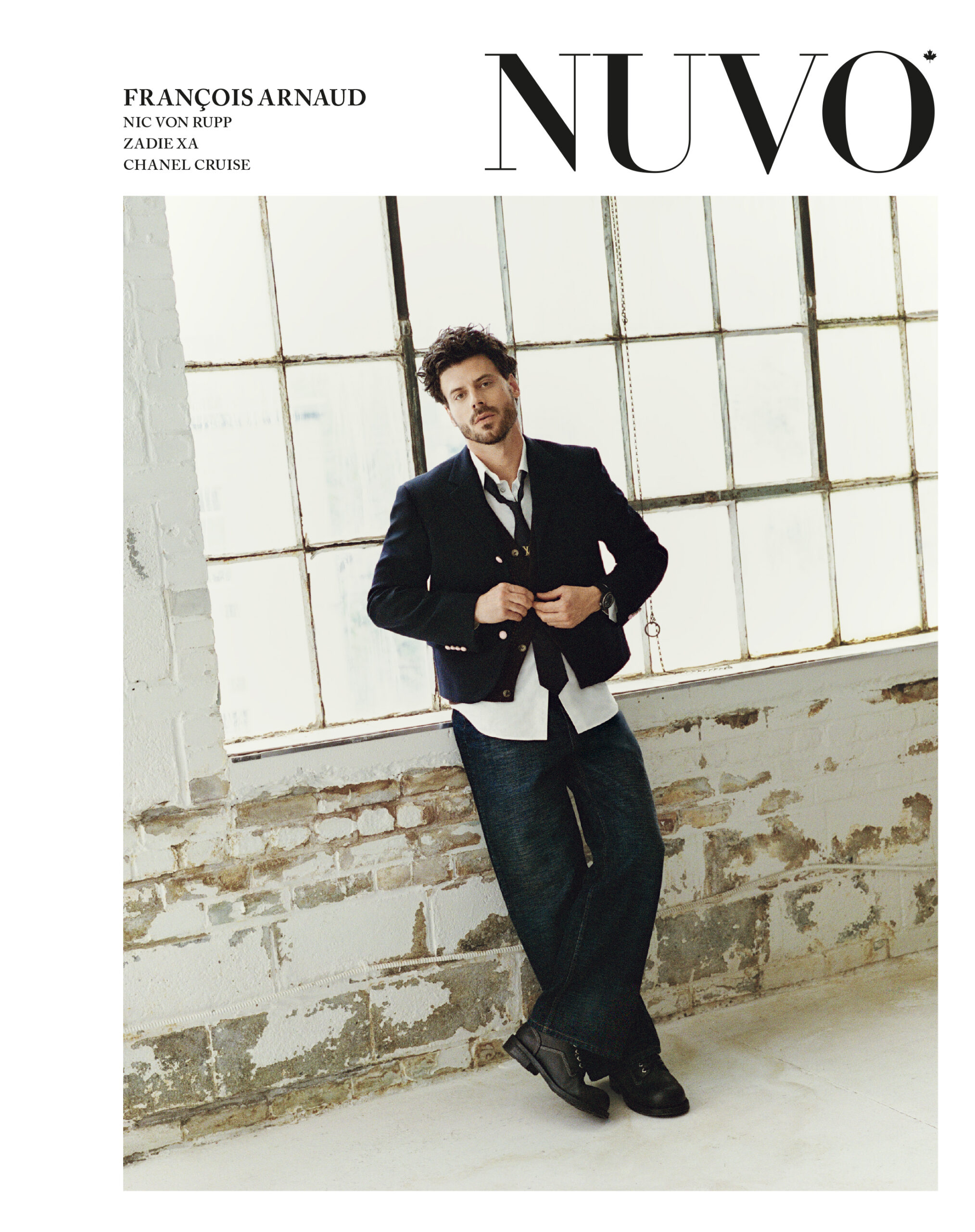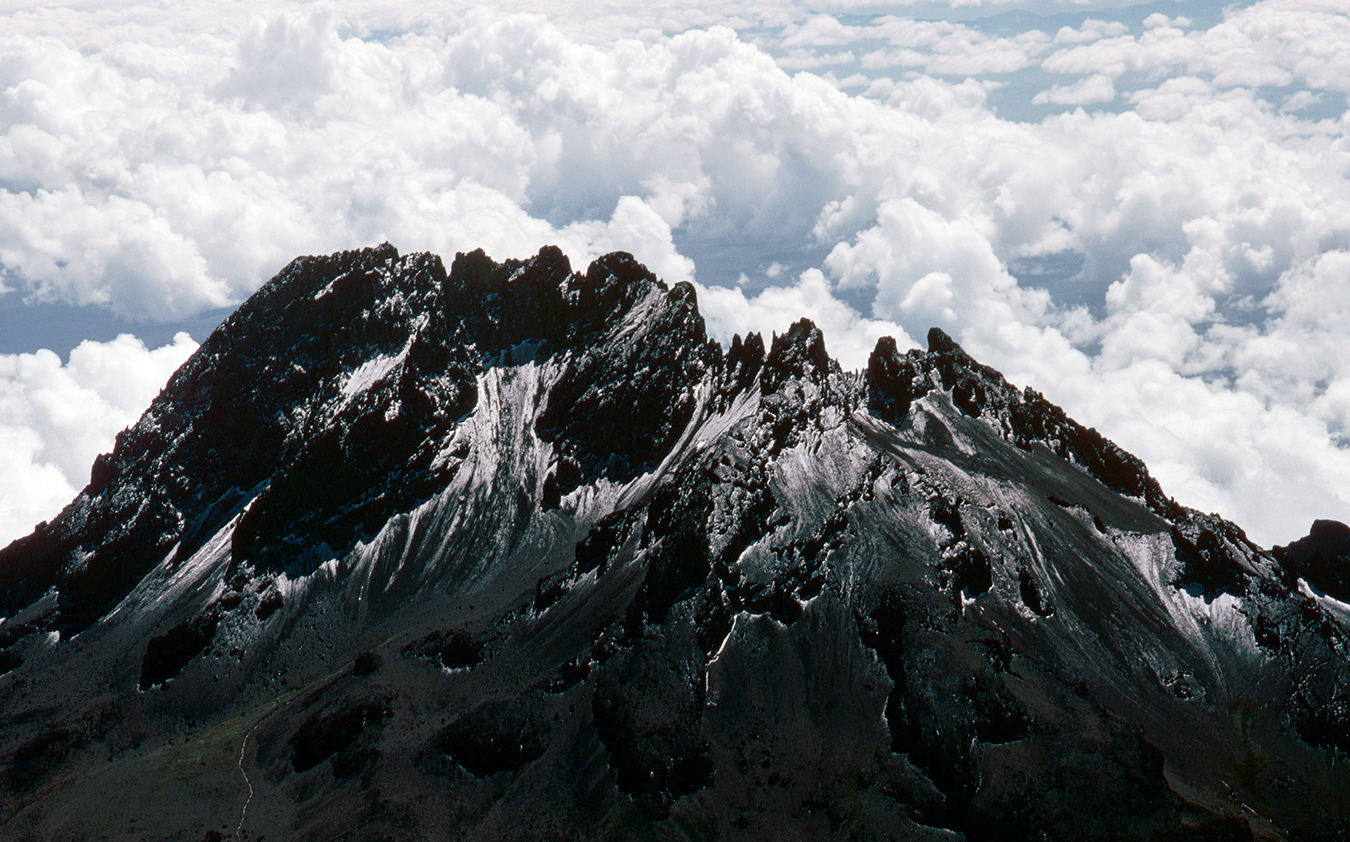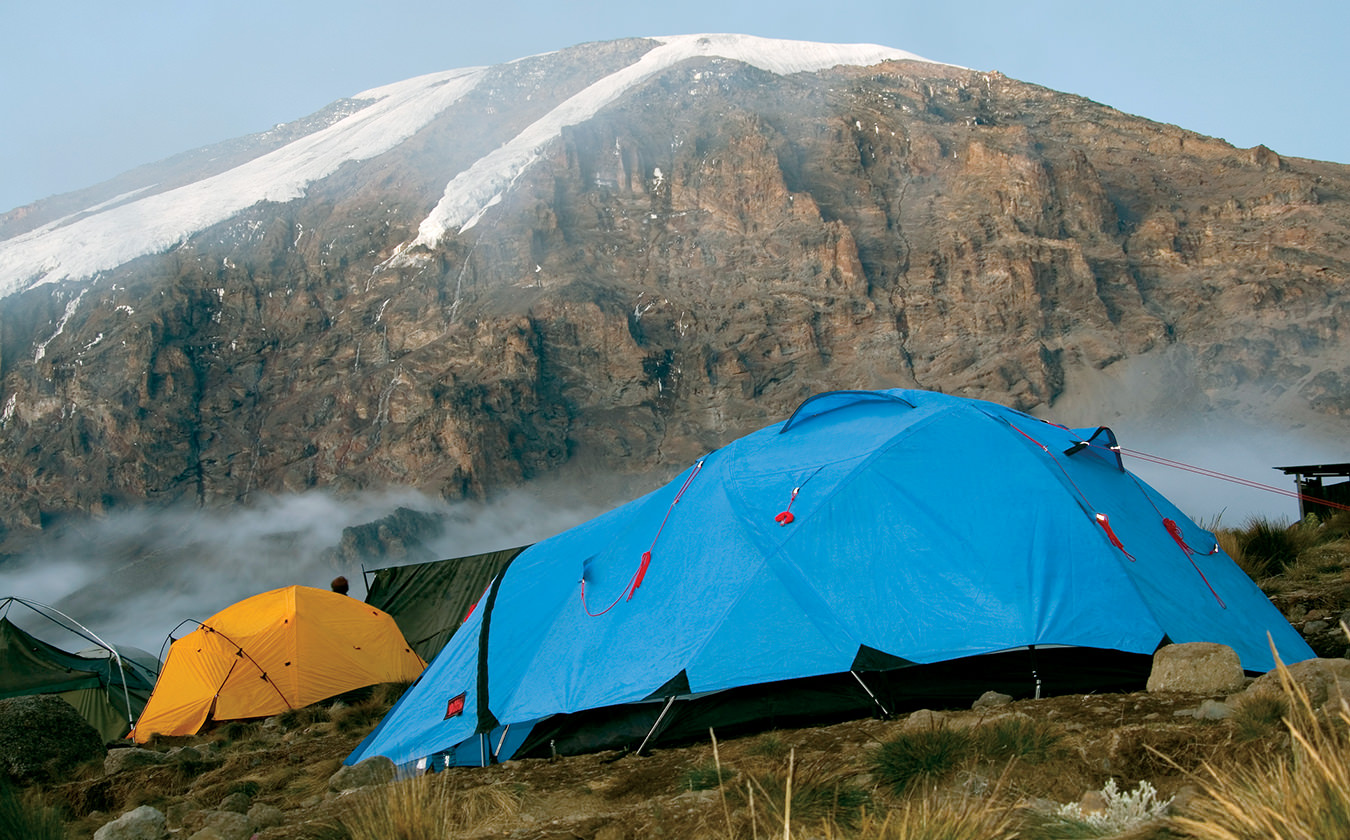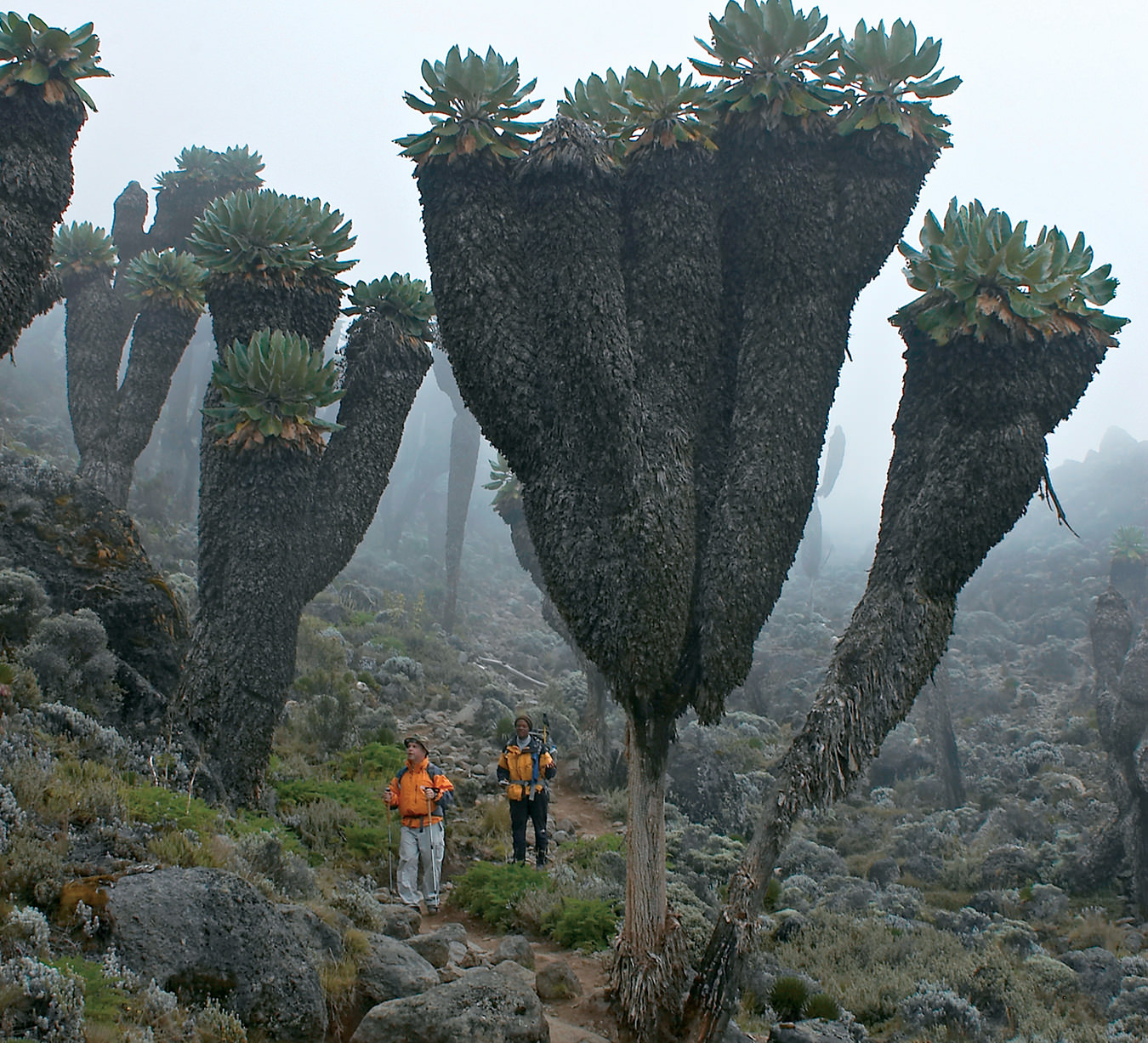As with most gruelling undertakings, my decision to ascend Mount Kilimanjaro was one I made lightly and on a whim. Reassured by a travel agent and several climbers’ accounts that it was an easy hike, I imagined being verily whisked to the top of the mountain on a cushion of air, winning the praise of my friends and the jealous admiration of my enemies. I have a good imagination.
To spend time travelling in Africa is to acquire a connoisseur’s taste for procedural painlessness at airports, nicely appointed baggage claims, and efficient but polite immigration officers—three things in shortage continent-wide. Measured by these standards, Tanzania’s Kilimanjaro International Airport is a rare and delightful vintage.
The drive from the airport into Moshi—a town on the slopes of Mount Kilimanjaro and the starting point for most journeys up the mountain—is a pleasant 45 minutes. The road I travel is lined with mud and thatched huts, small plots of corn, and lines of uniformed and singing schoolchildren. The drive is marred only when we are pulled over at a police checkpoint manned by well-heeled guards carrying assault rifles. They speak with the driver for a moment in Swahili, then wave us on. “They wanted to check that the car had a fire extinguisher,” is the unconvincing explanation. Such disconcerting displays of over-armament are to feature large in the coming days, particularly in areas frequented by tourists. No one will explain from what exactly we are being protected, but the frequent car checks and polite questions directed to out-of-towners suggest that the local authorities are interested in heading off the possibility of anyone abducting foreigners.
The economic reality in Tanzania is such that tourist-nabbing would be a threat, even from the most peacefully minded. Most in the country subsist on a pittance or no salary at all, and it is this you see when speeding past on the trip from the airport: small, self-built homes and subsistence farms large enough to feed a small family. The climate of Tanzania (as in much of Africa) is such that one can live and multiply, if not comfortably or in any security, with no money at all. Those that do receive a salary can indulge in the ultimate status symbol: a cellular phone. The extent of the cell phone companies’ marketing campaigns as a cultural oddity cannot be overstated; there are hundreds of single-room mud brick homes painted over with advertisements for Vodafone or MTN, and the streets of Moshi are filled with electronics vendors and loud-speaker advertisements promoting the latest wireless offering.
I check in at my hotel, and try as best I can to prepare myself for the following day’s ascent. At the hotel gift shop, I pick up a book of Hemingway to inspire. Absent is The Snows of Kilimanjaro, a collection of short stories, so I settle for Green Hills of Africa. I pride myself to think that even Hemingway, a perennial fabulist and exaggerator of personal accomplishments, never claimed to have made an attempt on the mountain—though there wasn’t a mountaineering industry and an army of trained guides available
in the 1930s to cart him to the top.
The next morning, after a comfortable night of drinking gin and tonics by the pool, I am introduced to my guide. Steven is slight and quiet, and has the red eyes of someone who has spent much time at high altitudes. He is also young, and I learn that I am one of his first commissions as a full guide. To counter this disheartening news, Steven assures me that he worked as a porter and assistant for many years before attending training to earn his higher-profile—and better-paying—place as a guide. Bona fides having been established, we have a brief discussion of the day’s plan and set out on the bus to the starting point of Kilimanjaro’s Marangu route.
Marangu, uncharitably known by mountaineering purists as the “Coca-Cola route”, is the most popular of Kilimanjaro’s trails. It is a relatively comfortable climb for most of the route, and is fitted with cabins and washroom facilities at its overnight camps. However, despite its reputed ease—or perhaps because of it, and its subsequent attraction to less-physically inclined travellers—the Marangu route has a failure rate of roughly 60 per cent. Some hikers opt to take the altitude-sickness medication Diamox to reduce the effects of the lack of oxygen, but I was confronted with much conflicting and troubling advice. It should, I was told, be taken two days before climbing, yet should be taken only when feeling sick; it ameliorates altitude sickness, yet also makes it appear sooner and actually worsens it; it may or may not be taken in conjunction with malaria medication; it makes your fingers tingle and your coffee taste like urine. I ultimately choose, in a rash fit of pique, to toss this miracle of modern medicine aside.
The first day’s hike is an easy trek under a lush forest canopy. The evening is spent at Mandara, a camp of huts set in a glade just below the timberline where the rainforest gives way to moorland. The cold night air is filled with the shrieks of apes, and the guides take turns patrolling the clearing with rifles under the full moon and cloudless sky.
The sky on day three is a deep-blue colour, and not far below our feet is a thick white sea of undulating, crisp cloud.
I am woken in the morning with tea, and after a breakfast of porridge, toast and omelettes, Steven and I continue up the mountain to emerge from the forest mid-morning. The moorland setting consists of tall brown grass and shrubby plants, where the air is too cold and the ground too infertile to support anything substantial. For the remainder of the day, we walk through this low-lying land unprotected from the sun. It is a tougher go than the day before; when we reach camp, I am immediately ready for bed.
The sky on day three is a deep-blue colour, and not far below our feet is a thick white sea of undulating, crisp cloud. Every once in a while, a breath of it reaches up the mountain slope and washes over us before dissipating like surf crashing on a breakwater. Along the trail, the moorland gives way to a rocky desert moonscape. At one point we cross a failing trickle of a stream. “This is the highest point of water on the mountain,” says Steven. “Beyond here is very dry.”
Our ultimate goal—the summit and its white glacial cap—is within sight far ahead and above, but looks as if it’s not much further than a few hundred metres away. Distances are deceptive where there is nothing to obscure your view. This is paradoxically both encouraging and disheartening.
There will be little rest tonight. When we reach Kibo Hut at the foot of the final slope, there will be just enough time for supper and an hour or two of sleepless tossing before we make the final push up the scree shortly after midnight; we want to make it to Gilman’s Point, the edge of the crater rim, in time for the sunrise. We begin a torturous hike up a steep slope of fine volcanic ash and loose pebbles. The going is slow, and every step forward ends with a bigger slide back.
We are among the first climbers to set out in the early morning, and there is a long line of headlamps behind us snaking its way up the slope, all questing for a mountain-top sunrise. My breath comes only with labour, the wind is dry and biting, and I wonder if all Kilimanjaro climbers feel as miserable as I do now. Before long, I find myself stopping for three deep breaths before taking each step. As sunrise approaches, the morning twilight brightens the mountain enough to show the discouragingly long trip to the edge of Gilman’s Point.
“Only 100 yards to Gilman’s,” Steven says every hundred yards or so. “From there to Uhuru is easy walking.” This I doubt; Uhuru Peak is the highest point on the mountain.
For every five minutes of movement I rest for 10. My eyes grow heavy as the morning begins to grow warm in anticipation of the sun, and I think of the many ways that I could have spent my vacation that did not involve oxygen deprivation. I think of people far away dozing cozily in wingback chairs before roaring fires with Labrador retrievers at their feet. I curse Steven and his increasingly obvious deceptions regarding the distance to Gilman’s. And I damn myself repeatedly for embarking on what I supposed would earn me an obscure but nonetheless impressive feather in my cap—“Why yes, I’ve climbed Kilimanjaro.” If only I had known. Yet I keep moving; the ash slope gives way to larger boulders, and the lip of Gilman’s Point looms close for what seems to be an eternity.
I don’t remember crossing that lip, but I do recall sitting on a rock on the edge of the crater as the sun crests the horizon. I have been anticipating this moment for a week, and I imagine hearing the opening bars of “Also Sprach Zarathustra” as I watch this stirring sight. Even months later, I will recall the moment and the image of the sunrise in perfect high-fidelity.
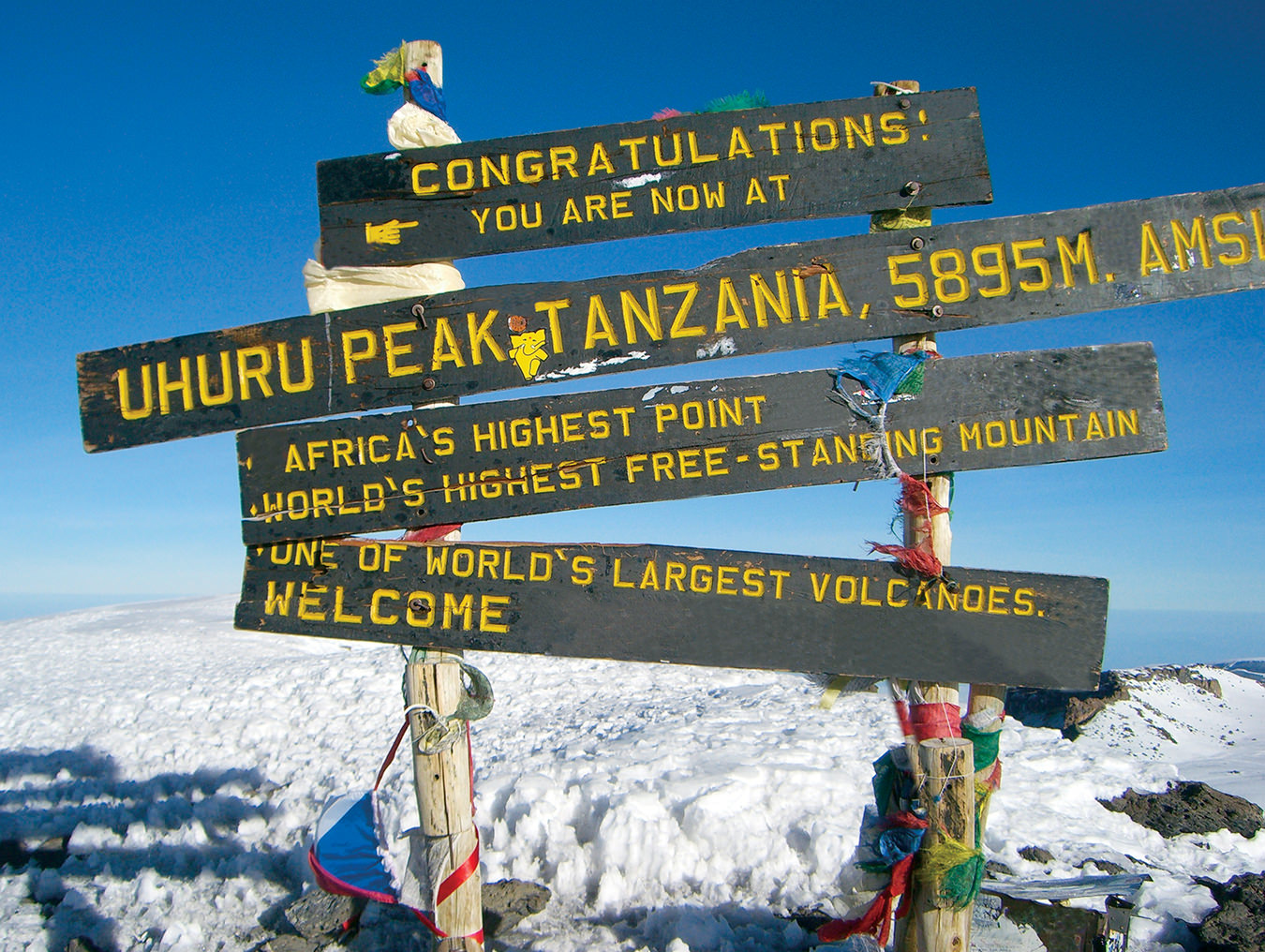
©iStock International.
The sun climbs higher into the sky, and I do not know how long I have sat there. Steven shakes me. “Uhuru is not far now.” More lies, I know, but still I respond to the deception and struggle to my feet.
So begins a light-headed walk along the mountain’s rim. I find myself drifting off into daydreams. We encounter a field of ice—Hemingway’s famed snows—that I have an unaccountably difficult time negotiating. Steven eyes me warily. “Do you feel sick or have a headache?”
I consider this. “No, I feel fine. But my head is sleeping.”
“There is no danger, then. Uhuru is not far. Two hundred metres.” He gestures with a nod. Unbelievably, he is right; the peak is not much further than that. Without another word, we trudge on.
Though the sunrise at Gilman’s Point remains firmly in my memory, afterward I do not remember much here, at the summit. I recall something about a sign, and being surrounded by blue, far above the clouds. I am very tired.
The journey seems to get easier on the way down. I surprisingly feel much more coherent, though occasionally I catch myself about to say something apropos of nothing before shaking it from my head.
Traversing the slope of volcanic ash, however, is much, much worse on the way down. What was simply a tricky hike on the way up has become an uncontrolled stumble-run down, ending in a dusty heap every 20 metres or so. Eventually, Steven and I wrap an arm around each other’s shoulders and perform a mad three-legged race down the mountain.
When we reach Kibo Hut, the other climbers have all begun the descent, and a large group of incredulous porters forms around the late returns. “I have never seen someone suffer so much on the mountain,” Steven tells them, “and still finish.” I decide to take this as a compliment.
The trip back down to Moshi is anticlimactic and marked both by a smug satisfaction that I radiate toward those climbers I meet headed up the trail, and by the enormous blisters that have formed on the soles of my feet. It takes us another day, but we eventually travel the distance down to the entrance of the Marangu trail and, at great length, the hotel. A relaxing night by the pool has me reflecting that it wasn’t so tough after all, and that I might try the mountain again by a different trail. I am compelled to reconsider when the blisters on my heels oblige me to tiptoe back to my room.
From there it is back to the airport, accompanied by a warm, dry breeze and an unimposing sun overhead. With Kilimanjaro at my back, I am driven past the mud huts merrily adorned with cellphone advertisements, past playing children and sedate banana farms, past both happiness and extreme poverty. All around is human joy and suffering painted so close that they blend together. I reflect that this is not unlike a trip up Kilimanjaro, and indeed is the essence of Africa: to suffer much and to find contentment. Like all such ordeals, Kilimanjaro is a good thing to do once and never again.

